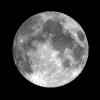Courtesy of EarthSky
A Clear Voice for Science
www.EarthSky.org
 Comet Hartley 2 might brighten to binocular object in late September
Comet Hartley 2 might brighten to binocular object in late September
 The equinox falls at 9:09 p.m. on this Wednesday evening, according to clocks set to Mountain Daylight Time. That translates to 3:09 a.m. tomorrow – on Thursday, September 23 – Universal Time. So some calendars will show today as the equinox, and others will show tomorrow.
The equinox falls at 9:09 p.m. on this Wednesday evening, according to clocks set to Mountain Daylight Time. That translates to 3:09 a.m. tomorrow – on Thursday, September 23 – Universal Time. So some calendars will show today as the equinox, and others will show tomorrow.
Everything you need to know about the autumnal equinox of 2010
Here are some sky highlights of this 2010 September equinox. If your sky is clear, you can glimpse an almost full Harvest moon in the east after sunset on this equinox evening. The crest of the moon’s full phase will come only 6 hours after the exact moment of the 2010 September equinox – in early morning tomorrow for the U.S. and Europe (4:17 a.m. Thursday morning Central Daylight Time, or 9:17 Universal Time). This is the northern hemisphere’s legendary Harvest Moon and the southern hemisphere’s first full moon of spring. What’s more, there is a blazing star like light near tonight’s moon. It is the solar system’s largest planet Jupiter, which just yesterday reached its opposition – when Earth flew between Jupiter and the sun.
The full moon will not fall on the September equinox again until the year 2029, and Jupiter’s next comparably good appearance on the September equinox will not happen for another 12 years.
Autumn equinox, cycles of nature and Chinese philosophy
By the way, the sun sets due west on this day of the equinox, the first day of autumn for North America. Many people write to us around this time, trying to comprehend how that can be so. It is really tough to understand without a three-dimensional visual aid – maybe one of those plastic celestial globes. Just remember, we all see the same sky. On the day of the equinox, the plane of Earth’s equator is intersecting the ecliptic – or plane of Earth’s orbit around the sun. That is a fancy way of saying the sun is on the celestial equator. This celestial equator intersects your horizon at points due east and due west. That is why today – September 22, 2010 – the sun rises due east sets due west as seen from all across the globe. That makes today a good day for finding due west from your yard or other favorite site for watching the sky.
So happy equinox, and enjoy Jupiter and the nearly full Harvest Moon tonight!
Fastest sunsets around equinox time
Written by Bruce McClure
Astronomy Picture of the Day from NASA/JPL
U.S. Naval Observator Astronomical Information center